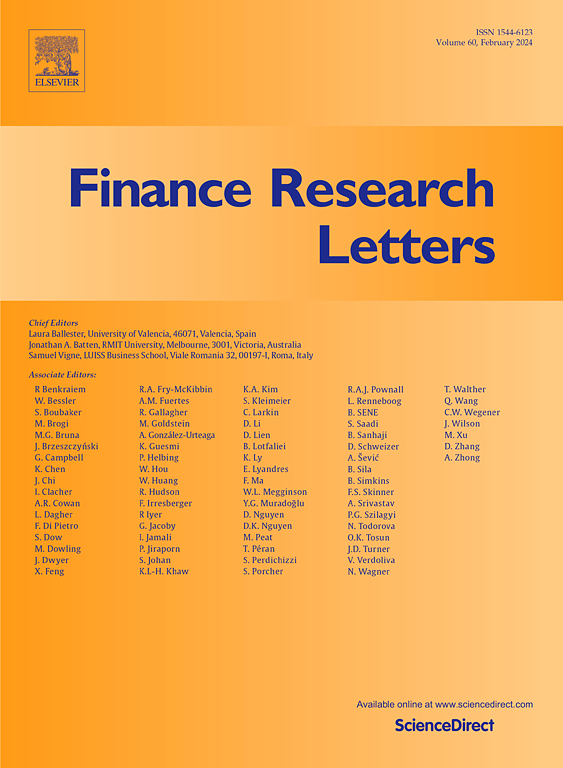数字化转型、创新投资和质量
IF 6.9
2区 经济学
Q1 BUSINESS, FINANCE
引用次数: 0
摘要
本文利用2011 - 2022年中国a股上市公司的面板数据,研究了数字化转型对双向创新投资和创新质量的影响。通过应用固定效应回归并进行稳健内生性检验(包括差异中差异(DID)、倾向得分匹配(PSM)和工具变量(IV)方法),研究结果表明,DT促进了剥削性创新,同时抑制了探索性创新。两种创新形式之间的差异与创新质量呈倒u型关系。机制分析表明,创新创新增加了行业竞争,降低了风险承受能力,导致企业优先考虑剥削性创新。这种效应在DT水平较高的企业中更为明显,在非国有企业、小型企业和非知识密集型产业中更为明显。该研究为寻求在数字时代优化其创新战略的企业提供了战略见解。本文章由计算机程序翻译,如有差异,请以英文原文为准。
Digital transformation, innovation investment and quality
This study investigates the impact of digital transformation (DT) on ambidextrous innovation investment and innovation quality, using panel data from Chinese A-share listed companies between 2011 and 2022. By applying fixed-effects regression and conducting robust endogeneity tests—including Difference-in-Differences (DID), Propensity Score Matching (PSM), and Instrumental Variable (IV) methods—the findings reveal that DT promotes exploitative innovation while suppressing exploratory innovation. Moreover, the disparity between these two forms of innovation follows an inverted U-shaped relationship with innovation quality. Mechanism analysis shows that DT increases industry competition and reduces risk tolerance, leading firms to prioritize exploitative innovation. This effect is more pronounced in firms with higher DT levels and is stronger in non-state-owned, smaller firms, and those in non-knowledge-intensive industries. The study provides strategic insights for firms looking to optimize their innovation strategies in the digital era.
求助全文
通过发布文献求助,成功后即可免费获取论文全文。
去求助
来源期刊

Finance Research Letters
BUSINESS, FINANCE-
CiteScore
11.10
自引率
14.40%
发文量
863
期刊介绍:
Finance Research Letters welcomes submissions across all areas of finance, aiming for rapid publication of significant new findings. The journal particularly encourages papers that provide insight into the replicability of established results, examine the cross-national applicability of previous findings, challenge existing methodologies, or demonstrate methodological contingencies.
Papers are invited in the following areas:
Actuarial studies
Alternative investments
Asset Pricing
Bankruptcy and liquidation
Banks and other Depository Institutions
Behavioral and experimental finance
Bibliometric and Scientometric studies of finance
Capital budgeting and corporate investment
Capital markets and accounting
Capital structure and payout policy
Commodities
Contagion, crises and interdependence
Corporate governance
Credit and fixed income markets and instruments
Derivatives
Emerging markets
Energy Finance and Energy Markets
Financial Econometrics
Financial History
Financial intermediation and money markets
Financial markets and marketplaces
Financial Mathematics and Econophysics
Financial Regulation and Law
Forecasting
Frontier market studies
International Finance
Market efficiency, event studies
Mergers, acquisitions and the market for corporate control
Micro Finance Institutions
Microstructure
Non-bank Financial Institutions
Personal Finance
Portfolio choice and investing
Real estate finance and investing
Risk
SME, Family and Entrepreneurial Finance
 求助内容:
求助内容: 应助结果提醒方式:
应助结果提醒方式:


